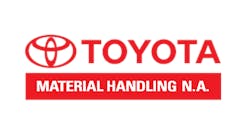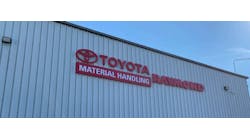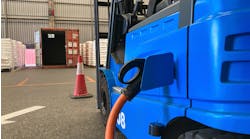of Labor first issued the Powered Industrial Truck Operator Training Standard (PITOT). If you were around at the time, PITOT caused a lot of heartburn because trained lift truck drivers were rare—the last person hired became the guy who drove the lift truck.
Nine years later, with the standard in place, trained lift truck drivers are the rule. However, two negative factors are at work:
- Too many driver training programs contribute to a sense of complacency, and many other factors are taking top priority.
- Prices of equipment and repair parts have skyrocketed, which means that it costs much more to operate a lift truck today than it did nine years ago.
That's the view of Jim Shephard, president of Shephard's Industrial Training Systems, who has been in the material handling business 30 years. He thinks training has improved a lot from the pre-1998 period.
"I see companies doing things I've never seen before. They've improved their training and are seeing results. They understand safety," he says.
The original Powered Industrial Truck Training Standard was short by OSHA standards—only about 36 lines (the explanatory material ran longer). The standard itself was clear and concise. Still, PITOT wasn't an instant success. First, a brand-new lift truck standard had to be assimilated and that took time. Second, too many people and companies jumped in, offering quick solutions for compliance.
Shephard is looking for a renaissance for PITOT, and some renewed market interest proves it. "We have a contract with a company with 60 plants," he says. The company contracted with Shephard for training at all 60 locations. "The driving pressure was maintenance costs," he says.
Driver training is not exclusive to lift trucks. Operators of hydraulic cranes and Bobcats have to be trained. Even an operator of a personnel carrier has to be trained (although I doubt whether the supervisor who tours the plant in one sits still for the training). I don't even know whether a personnel carrier has an individual standard. Some pieces of equipment have their own standards; others piggyback other standards.
Some aspects are as good today as when the original standard was introduced:
- Operators must be trained on the type of lift truck that they will operate on the job. (The narrow-aisle truck operator gets trained on that type of truck.)
- Operators must be trained in the environment in which they work. (If you have an operator who loads trailers on the dock, you have to provide training on the dock.)
- Operators shall be evaluated by a competent person. (A qualified person, usually a supervisor, should oversee the type of lift truck and the environment.)
Bernie Knill
Former MHM Editor-in-Chief and instrumental in the passage, nine years ago, of the OSHA standard for lift truck training.



